
Koei Tecmo and Team Ninja briefly released an Alpha Demo version of Nioh 3 for PlayStation 5 following its unveiling at State of Play earlier in the month. Given that I’ve played the initial two installments, I had the opportunity to explore the demo within the specified timeframe and caught a sneak peek of the upcoming game’s innovations, including an open-world map and fresh combat mechanics.
To put it plainly, I had assumed that Team Ninja would follow up on their coverage of the Chinese Three Kingdoms lore by creating a sequel to Wo Long. However, they seem to be returning to the Japanese Warring States era with a fresh installment of Nioh instead. Given the new gameplay elements and clear connections to Wo Long, I can’t help but question if there are any remaining untouched aspects of the Warring States period history that the studio might still explore.
In essence, the existing series has already delved deeply into the main events involving the Three Unifiers during their time, including the lives of Oda Nobunaga and Toyotomi Hideyoshi in Nioh 2, as well as the battles of Sekigahara and Osaka that established Tokugawa Ieyasu’s shogunate in the first game. The portrayal of the powerful Takeda clan under Shingen’s leadership is certainly exciting for period enthusiasts, but it may also spark anticipation among fans for other significant clans like Uesugi and Hojo to be explored in future installments.
First off, let me share my thoughts on the gameplay from the Alpha demo. Only after that will I delve into the intricacies of its lore.
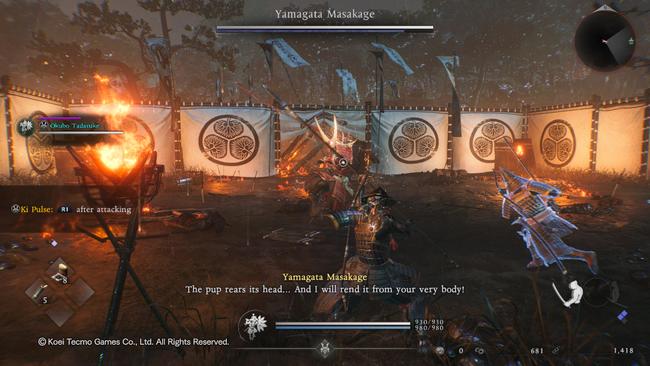
In Nioh 3, they’ve divided the traditional dual melee and ranged weapon slots into Samurai and Ninja Styles. The traditional war weapons such as the Odachi sword and Spear are now exclusively in the Samurai Style, retaining its familiar playstyle from previous Nioh games. On the other hand, weapons like the Kusarigama chain sickle and Knuckles have been moved to the Ninja Style, which emphasizes a more agile, evasion-focused gameplay.
Despite my attempts, I found it challenging to fully grasp the Ninja Style, mainly due to the absence of Ki Pulse, which left me frequently short on stamina for defending myself against enemy attacks following my own assaults and evasions. However, Team Ninja has kindly provided numerous alternatives that cater well to my more traditional play style I’ve grown accustomed to.
The first option allows me to switch the function of the style modification button to prevent overuse during intense moments, while still maintaining the original style with quick taps. The second option enables me to execute a Ki Pulse following regular blocks, which means I can continue using my traditional blocking technique without worrying too much about executing deflection parries. Moreover, this feature assists me in defeating tougher bosses more effectively.
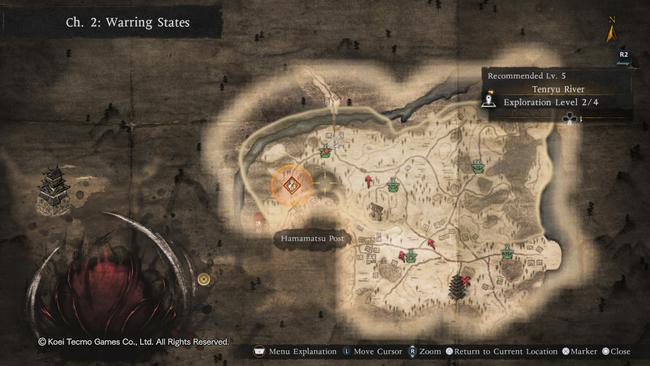
In their work on Wo Long: Fallen Dynasty, Team Ninja appears to have drawn some inspiration. A significant development is the introduction of jumping mechanics to a Nioh game, which also brings about alterations in stage designs that now allow players to access multiple rooftops without lengthy detours. However, it’s worth noting that the early stages and primary Crucible zones still adhere to the semi-linear progression approach. What sets this new sequel apart is Team Ninja’s decision to incorporate an open field map into the game design.
In these areas, you can now venture off to discover hidden side missions or challenging foes; among them are the Crucible Wraiths, identified by an aura, who when defeated will unlock special abilities for the yokai species’ Soul Cores. Additionally, certain spots contain Bases, where eliminating all occupying enemies grants access to reward treasure chests. This style of advancement brings to mind Toukiden 2, another game developed by Koei Tecmo’s sister studio, Omega Force.

One notable feature impacted by this update involves the Revenants. Now, whenever you call and defeat one, they’ll leave behind a wandering spirit that moves towards a certain location. Over time, you’ll notice these spirits gathering at a particular place, which turns out to be the burial site of a Bloodedge Demon. The strength of this demon increases with each Revenant you vanquish, making it more formidable when summoned for a challenge.
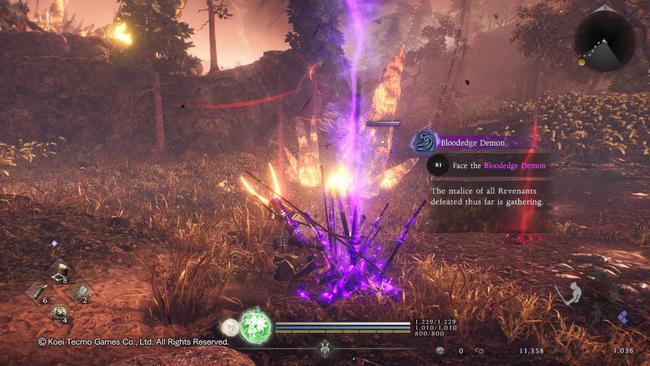
Beyond that, the open landscape features various areas where friendly creatures interact, including the beloved Kodamas, who are the unofficial mascots of the series. Additionally, Scampuss from Nioh 2 reappears, but this time it will test your skills by outrunning you. Only when you manage to catch up can you stroke it and receive a reward. I appreciate this modification, as in many of my Nioh 2 sessions, the Anima regeneration bonus from Scampuss often went unused outside of battles.
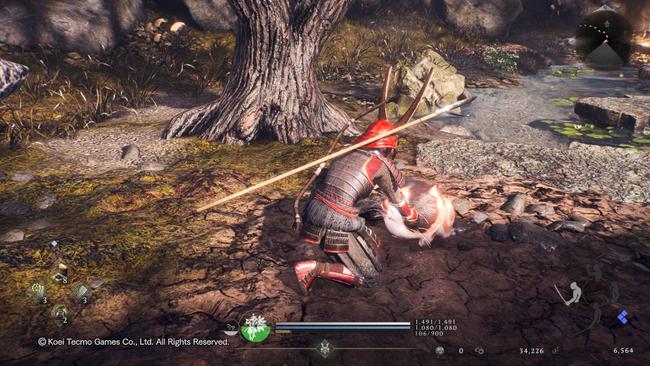
As a gamer, I’ve come across an intriguing new flying contraption that vaguely resembles the Pokemon Chimecho. It seems to be pleading for me to take it down, and guess what? If I oblige and shoot it, it transforms into an adorable weasel-like creature! Plus, petting this harmless critter rewards me with additional bonuses.
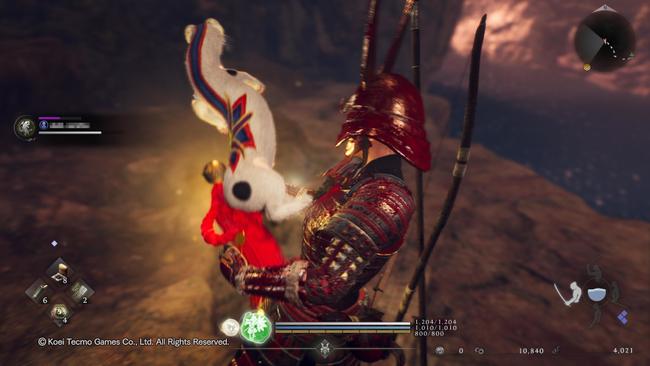
After I successfully conquer the Crucible stage’s boss, it’s wonderful to witness the town under its influence gradually regaining vitality. In this alpha version, I think the development team could enhance the experience by incorporating some characters actively engaged in rebuilding the town.
One issue I had with Toukiden 2 was the lack of feeling like we were reclaiming areas of life as they got purified. I’d love for Team Ninja to incorporate this aspect to enhance the game’s world-building even more. Additionally, I’d appreciate seeing signs of revival in captured bases and key boss locations such as Mezuki. As a bonus suggestion, it would be great if there was a marker or symbol left behind to allow us to replay those battles when desired.
As a fellow enthusiast, I’d like to share some thoughts about the game’s captivating setting, but beware: there might be spoilers ahead. If you prefer to uncover the story and world setting at your own pace, it’s probably best to stop reading now. But if you’re ready to delve deeper, let’s proceed!
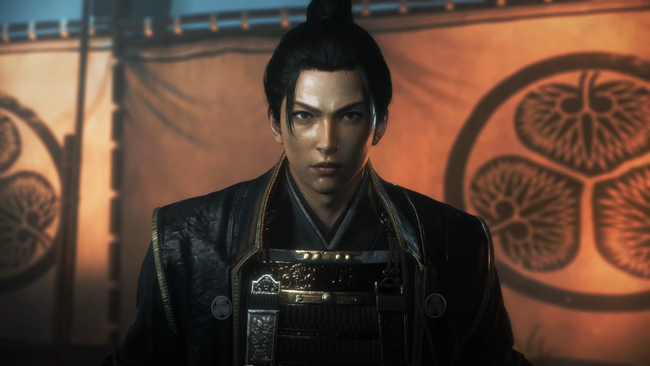
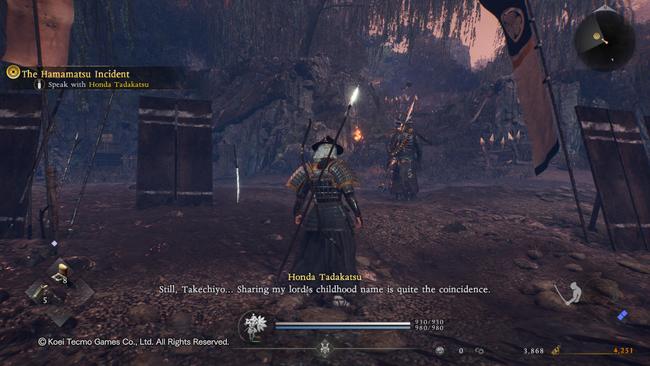
Towards the end of the opening trailer, what seemed like a misleading clue turned out to be significant: The character named Tokugawa Takechiyo is actually your playable character in the game. Furthermore, both the game’s storyline and dialogue scenes, along with the descriptions of missions, suggest that Tokugawa Ieyasu is your grandfather within the game’s narrative.
Incorporating the “Conquer the Crucible, Become Shogun” motif, it’s clear that the character I’m designing will embody none other than Tokugawa Iemitsu, originally known as Takechiyo. It would be quite intriguing to witness players transform this figure into a foreigner-like avatar, given that historically, Iemitsu was the Shogun who instituted the Sakoku isolation policy.
Beyond that detail, it seems that Nioh 3’s narrative might involve the main character traveling back in time to save Ieyasu from an early death. Time travel is not a novelty in the series, as Team Ninja has previously employed it in the DLC expansions for Nioh 2. Therefore, we’re curious about how Team Ninja will make this game’s storytelling unique.
Read More
- 50 Ankle Break & Score Sound ID Codes for Basketball Zero
- 50 Goal Sound ID Codes for Blue Lock Rivals
- Stellar Blade x Nikke DLC: Full Walkthrough | How to Beat Scarlet + All Outfit Rewards
- Mirren Star Legends Tier List [Global Release] (May 2025)
- Sony Doesn’t Sound Too Concerned About Switch 2, Even After A Record-Breaking Debut
- League of Legends: Bilibili Gaming’s Epic Stomp Over Top Esports in LPL 2025 Playoffs
- League of Legends: Anyone’s Legend Triumphs Over Bilibili Gaming in an Epic LPL 2025 Playoff Showdown!
- Lucky Offense Tier List & Reroll Guide
- League of Legends: T1’s Lackluster Performance in LCK 2025 Against Hanwha Life Esports
- 100 Most-Watched TV Series of 2024-25 Across Streaming, Broadcast and Cable: ‘Squid Game’ Leads This Season’s Rankers
2025-06-21 06:26